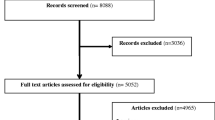Abstract
Background
We sought to characterize surgeon perceptions of patient attachment-related behaviors relative to patient-centered approaches during treatment decision-making within the clinical encounter.
Methods
An online survey including clinical vignettes was sent to board-certified surgeons to assess their approach to patient-centered treatment decision-making. Within these vignettes, patient behaviors associated with attachment styles (secure vs 3 insecure subtypes: avoidant, anxious, and fearful) were fixed and patient factors (age, race, occupation, and gender) were randomized. Analysis included repeated measures mixed-effects linear regression.
Results
Among the 208 respondents, the majority were male (65.4%) and White/Caucasian (84.5%) with an average age of 51.6 years (SD = 9.9). Most surgeons had been in practice for more than 10 years (66.8%) and treated adult patients (77.4%). Surgical specializations included breast (27.2%), HPB (35.0%), and broad-based/general (21.8%). Patient race, age, and gender did not impact surgeons’ patient-centered approach to treatment decision-making (all ps > 0.05). However, when the “patient” had a white collar occupation and were securely attached, surgeons reported a greater likeliness to spend equal time presenting all treatment options (p = 0.02 and p < 0.001, respectively) and believe the patient wanted an active role in decision-making (p = 0.01 and p < 0.001, respectively). Surgeons reported being least likely to agree with a patient’s treatment decision (p < 0.001) and an increased likelihood of being directive (p = 0.002) when patients exhibited behaviors associated with avoidant attachment.
Conclusion
Attachment-related behaviors were associated with differences in surgeon approaches to patient-centered decision-making. Attachment styles may offer a framework for providers to understand patient behaviors and needs, thereby providing insight on how to tailor their approach and provide optimal patient-centered care.



Similar content being viewed by others
References
Cancer Treatment Surgery | MD Anderson Cancer Center. https://www.mdanderson.org/treatment-options/surgery.html. Accessed July 30, 2018.
Sepucha KR, Fowler FJ, Mulley AG. Policy Support For Patient-Centered Care: The Need For Measurable Improvements In Decision Quality Documenting gaps in patients’ knowledge could stimulate rapid change, moving decisions and care closer to a patient-centered ideal. Heal Affiars. 2004;23. doi:https://doi.org/10.1377/hlthaff.var.54
Braddock C, Hudak PL, Feldman JJ, et al. "Surgery is certainly one good option": quality and time-efficiency of informed decision-making in surgery. J Bone Joint Surg Am. 2008;90(9):1830-1838. doi:https://doi.org/10.2106/JBJS.G.00840
Janz NK, Wren PA, Copeland LA, Lowery JC, Goldfarb SL, Wilkins EG. Patient-physician concordance: Preferences, perceptions, and factors influencing the breast cancer surgical decision. J Clin Oncol. 2004;22(15):3091-3098. doi:https://doi.org/10.1200/JCO.2004.09.069
Agha AZ, Werner RM, Keddem S, Huseman TL, Long JA, Shea JA. Improving Patient-centered Care: How Clinical Staff Overcome Barriers to Patient Engagement at the VHA. Med Care. 2018;56(12):1009-1017. doi:https://doi.org/10.1097/MLR.0000000000001007
Palmer Kelly E, Tsilimigras DI, Hyer JM, Pawlik TM. Understanding the use of attachment theory applied to the patient-provider relationship in cancer care: Recommendations for future research and clinical practice. Surg Oncol. 2019. doi:https://doi.org/10.1016/j.suronc.2019.10.007
Hooper LM, Tomek S, Newman CR. Using attachment theory in medical settings: Implications for primary care physicians. J Ment Heal. 2012;21(1):23-37. doi:https://doi.org/10.3109/09638237.2011.613955
Ainsworth MS, Bowlby J. An ethological approach to personality development. Am Psychol. 1991. doi:https://doi.org/10.1037/0003-066x.46.4.333
Thompson D, Ciechanowski PS. Attaching a New Understanding to the Patient-Physician Relationship in Family Practice. J Am Board Fam Med. 2009;16(3):219-226. doi:https://doi.org/10.3122/jabfm.16.3.219
Holwerda N, Sanderman R, Pool G, et al. Do patients trust their physician? the role of attachment style in the patient-physician relationship within one year after a cancer diagnosis. Acta Oncol (Madr). 2013;52(1):110-117. doi:https://doi.org/10.3109/0284186X.2012.689856
Maunder RG, Hunter JJ. Can patients be “attached” to healthcare providers? An observational study to measure attachment phenomena in patient-provider relationships. BMJ Open. 2016;6(5). https://doi.org/10.1136/bmjopen-2016-011068
Evans SC, Roberts MC, Keeley JW, et al. Vignette methodologies for studying clinicians’ decision-making: Validity, utility, and application in ICD-11 field studies. Int J Clin Heal Psychol. 2015. doi:https://doi.org/10.1016/j.ijchp.2014.12.001
Agarwal AK, Murinson BB. New Dimensions in Patient–Physician Interaction: Values, Autonomy, and Medical Information in the Patient-Centered Clinical Encounter. Rambam Maimonides Med J. 2012. doi:https://doi.org/10.5041/rmmj.10085
Peabody JW, Luck J, Glassman P, Dresselhaus TR, Lee M. Comparison of vignettes, standardized patients, and chart abstraction: A prospective validation study of 3 methods for measuring quality. J Am Med Assoc. 2000. doi:https://doi.org/10.1001/jama.283.13.1715
Converse L, Barrett K, Rich E, Reschovsky J. Methods of Observing Variations in Physicians’ Decisions: The Opportunities of Clinical Vignettes. J Gen Intern Med. 2015. doi:https://doi.org/10.1007/s11606-015-3365-8
Bachmann LM, Mühleisen A, Bock A, Ter Riet G, Held U, Kessels AGH. Vignette studies of medical choice and judgement to study caregivers’ medical decision behaviour: Systematic review. BMC Med Res Methodol. 2008. doi:https://doi.org/10.1186/1471-2288-8-50
Cassedy HF, Enander RA, Robinson RC, et al. Attachment Theory as a Model of Doctor-Patient Interaction. J Appl Biobehav Res. 2015;20(4):151-178. doi:https://doi.org/10.1111/jabr.12036
Deniz ME. An investigation of decision making styles and the five-factor personality traits with respect to attachment styles. Educ Sci Theory Pract. 2011;11(1):105-113.
Chapman EN, Kaatz A, Carnes M. Physicians and implicit bias: How doctors may unwittingly perpetuate health care disparities. J Gen Intern Med. 2013. doi:https://doi.org/10.1007/s11606-013-2441-1
Hughes TM, Palmer EN, Capers Q, et al. Practices and Perceptions Among Surgical Oncologists in the Perioperative Care of Obese Cancer Patients. Ann Surg Oncol. 2018;25(9):2513-2519. doi:https://doi.org/10.1245/s10434-018-6564-9
Seo J, Goodman MS, Politi M, Blanchard M, Kaphingst KA. Effect of Health Literacy on Decision-Making Preferences among Medically Underserved Patients. Med Decis Mak. 2015;36(4):550-556. doi:https://doi.org/10.1177/0272989X16632197
Krumpal I. Determinants of social desirability bias in sensitive surveys: A literature review. Qual Quant. 2013;47(4):2025-2047. doi:https://doi.org/10.1007/s11135-011-9640-9
Evans SC, Roberts MC, Keeley JW, et al. International Journal of Clinical and Health Psychology Vignette methodologies for studying clinicians’ decision-making: Validity, utility, and application in ICD-11 field studies. Int J Clin Heal Psychol. 2015;15:160-170. doi:https://doi.org/10.1016/j.ijchp.2014.12.001
Author information
Authors and Affiliations
Corresponding author
Ethics declarations
Conflict of Interest
The authors declare that they have no conflict of interest.
Additional information
Publisher’s Note
Springer Nature remains neutral with regard to jurisdictional claims in published maps and institutional affiliations.
Electronic supplementary material
ESM 1
Example vignette of patient with anxious attachment style. (PNG 594 kb)
Rights and permissions
About this article
Cite this article
Palmer Kelly, E., Hyer, M., Paredes, A.Z. et al. Comparing Surgeon Approaches to Patient-Centered Cancer Care Using Vignette Methodology. J Gastrointest Surg 25, 1307–1315 (2021). https://doi.org/10.1007/s11605-020-04661-z
Received:
Accepted:
Published:
Issue Date:
DOI: https://doi.org/10.1007/s11605-020-04661-z




